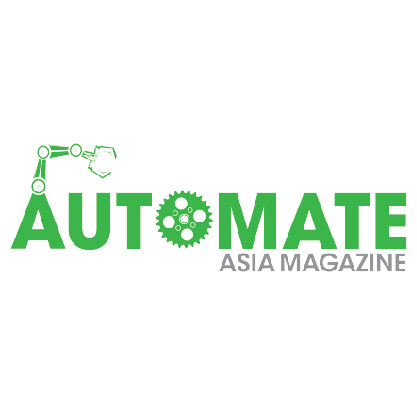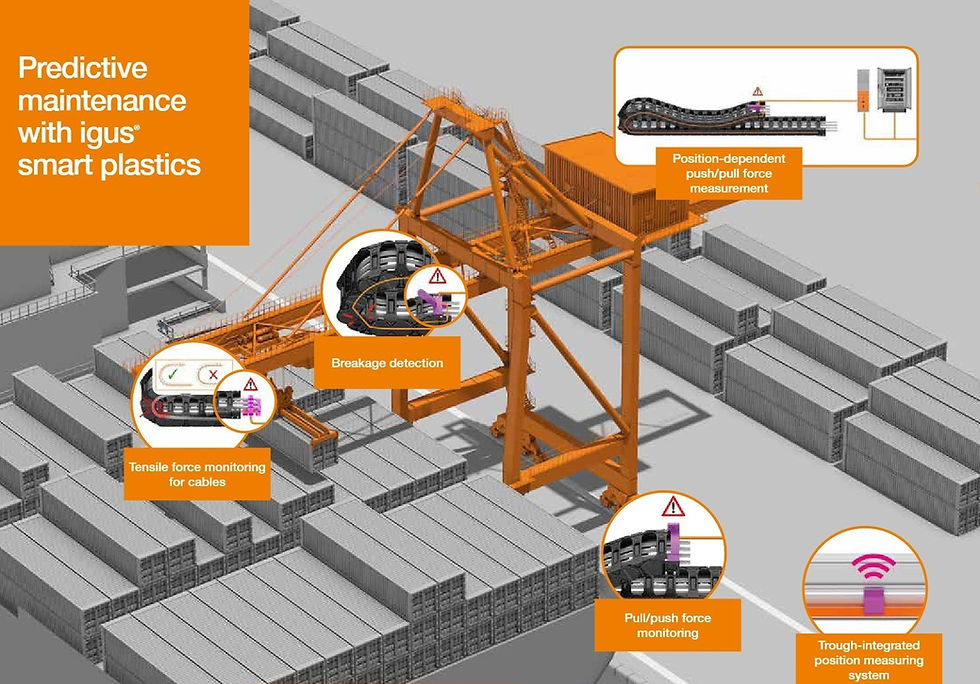Better Data Transfer Future-proof High Speed Interfaces
- Automate Asia Magazine

- Apr 27, 2021
- 6 min read
Updated: Apr 30, 2021
Teaser: To match the ever-increasing sensor resolution and speed at the front end, high-speed interfaces on the back end keep evolving with higher bandwidth and more reliability at reasonable cost. This article will walk you through highspeed interfaces of tomorrow and provide some insights on how to select for your applications.
The vision markets have always yearned or more – more data, more details, better accuracy - all made possible by more pixels. What’s more, increasing inspection speeds require large amount of data to be transferred from imaging sensors to PC fast. Therefore, it is inevitable that industry innovators would rise to these challenges, and introduce high speed, high pixel solutions.
Nowadays, cameras in the market are capable of incredible speed and resolution with a variety of imaging sensor options. Camera technology keeps evolving not just at the front end with sensor design, but also on the back end with camera interfaces. Introducing new interfaces into vision system continues to push the boundaries of imaging applications with higher bandwidth and more reliable data transfer.
What’s their differences? Crack this question from the following table:

What High-speed INTERFACES are available in the market?
To offer matching data transfer hardware for high pixel imaging sensors, a number of interfaces have been developed over the years, including Camera Link, CoaXPress and further development utilizing the GigE Vision platform.
For the similar performance, CoaXPress 2.0 solution will be more costcompetitive than CoaXPress 1.1 one, because cameras with either interface are in the same price range, while a twochannel CoaXPress 2.0 frame grabber costs less than a four-channel CoaXPress 1.1 frame grabber for the same overall bandwidth.
Indeed, 10GigE offers relatively longer transmission distance and its integration is easy with the familiar GigE components. CoaXPress 2.0 transmission length can be extended with some tradeoffs in bandwidth. With one channel of CXP 2.0 providing 12.5 Gbps and 10 GigE operating up to 10 Gbps, CXP 2.0 starts where 10 GigE finishes.
In addition, CoaXPress 2.0 integration can be very easy if product concept like the Basler boost bundle (camera plus interface card or frame grabber) is applied. Furthermore, using 10 GigE at full speed on copper cable can generate a lot of heat as 10 GigE chipsets have a high power consumption; other system level challenges need to be considered if the full speed of the interface is required.
Going for Speed
With all the advantages of CoaXPress 2.0 explained by various manufacturers, the essential advantages of CoaXPress include:
Very high bandwidth – maximizing throughput
At up to 12.5 Gbps using a single lane and scalable over multiple coaxial cables, CoaXPress 2.0 is currently one of the fastest interfaces on the market.
Sufficient cable lengths – bridging long distances
Customers frequently have problems with maximum cable lengths under 10 meters, as permitted by a USB3.1 gen. 1 interface or a Camera Link interface. With up to 40 m and a much higher bandwidth, CoaXPress offers a very promising alternative. It is even possible to bridge cable lengths of more than 100 meters with a trade-off in bandwidth.
Plug-and-play – easy to connect
CoaXPress enables data transmission as well as power supply via the coaxial cable, making it easy to establish a connection between the camera and PC. The CXP standard is also coupled to the GenICam standard and corresponds to other conventional vision standards. From a software perspective, that is why this standard offers a simple connection between the PC software and camera.
Exact synchronization – precise control
The optimal combination of frame grabber technology with the cameras used makes it possible to get highly precise camera synchronization even in multicamera systems with very low latency periods.
Cost benefits with easier system setup and component availabilities
Newly available electronics components as well as the option of using single-cable solutions result in a greatly improved price/benefit ratio. CoaXPress 2.0 (CXP12) is the interface with the lowest costs per transferred megabyte!
When and how to apply CoaXPress 2.0 technology in applications?
Machine vision applications have advanced rapidly. Today’s cuttingedge vision systems must meets far more demanding requirements such as distinguishing tiny defects in flat panel displays, wafers or solar cells, and multitasking numerous optical inspections in PCB quality assurance. These and countless other existing and emerging applications demand continual increase in camera speeds and resolution. CoaXPress 2.0 technology is able to unleash the full potential of state-of-art imaging sensors and therefore a perfect fit for demanding applications.
In the following, we are going to guide you how to utilize this new technology with application examples in factory automation and medical and life sciences:
3D AOI System for PCB Quality Control
Numerous optical inspections take place for PCB quality assurance, including completeness checking for various SMT and THT components, type recognition, polarity, offset, positioning, height, text and names as well as their colors. At the SPI (solder past inspection) stations, the shape of the solder joints are also checked.

A possible solution for these different requirements is a 3D AOI system with a high performance camera head supplemented by four side cameras, bar lightings and a frame grabber. The high performance head camera checks the SMT and THT components and 3D solder joints for defects. It captures the very fast reflections of the bar lighting from which the software calculates a 3D representation.
The side cameras supplements the head camera to display defects and features not visible by the head camera. To achieve significantly better measurement results with very high image quality and a streamlined vision system design, the Basler concept of CXP12 vision components, which are available as a bundle (camera plus interface card or frame grabber) offer a simplified choice at reduced cost.
Medical
Although the requirements for the boost mainly come from factory automation, applications in the medical and life science sector can also benefit from its advantages. Some examples of suitable applications include but are not limited to surgical microscopy, pathological slide scanning and NGS (Next Generation Sequencing). Surgical microscopes are increasingly equipped with a camera for live broadcast.

In this application, key requirements are a high level of details, high bandwidth for smooth data transfer, optimal contrast to display both bright and dark areas in live images, and excellent color rendering for precise diagnostic results. In pathological slide scanning it is important to keeping the duration of a scan in the user laboratories within acceptable limits. The scan period is affected mainly by the size of the sample and the camera properties field of view and bandwidth. The larger the area of a single image captured by the camera, the fewer scan positions are required to completely image a particular area and the faster is the scanning process itself. In laboratory automation, ever-faster and more reliable methods are being used to analyze genetic material through gene sequencing.
For high-resolution image acquisition at high frequency, a powerful vision system is required. A system with the CoaXPress 2.0 interface, consisting of camera, interface card or frame grabber and other components, meets the requirements for low installation effort and high quality of measurement results. Easy to use, quickly integrated, pricesensitive and high image quality, high bandwidth, high-end components from one source: cameras, lenses, cables, interface cards, frame grabbers - with all the advantages of the CoaXPress 2.0 standard. The boost CXP-12 cameras are also available separately.

Summary
Large data volumes at high transmission speeds across long distances: the CoaXPress 2.0 standard for industrial image processing makes it all possible. Designed as a successor to the prevalent Camera Link standard, this Machine Vision interface also requires an additional interface card in the PC.
Considering the large amount of transferred data, however, this is not a disadvantage – the CPU of the PC isn’t blocked by the data transmission but is fully available for the image processing application. Image processing systems with the CoaXPress 2.0 standard are best suited for high-performance applications such as FPD inspection and gene sequencing. They achieve the required image quality with a high data throughput, which makes it possible to significantly boost system performance with reasonable investment.
Basler offers the necessary individual or bundled components that can be easily integrated and configured using single software platform. This results in less system complexity, which keeps overall costs down.
To find out more about Basler high performance bundles, please visit https://info.baslerweb.com/l/73192/2021-04-22/cqj2hq
For more information contact us by phone (+65 6367 1355), by email at marketing.asia@baslerweb.com or via our website at www.baslerweb.com.
Press Contact:
Carol Wong – Head of Marketing Communication – Asia
Tel. +65 6367 1355
Carol.wong@baslerweb.com
Basler Asia
35 Marsiling Industrial Estate
Road 3 #05-06 Singapore 739257





-01.jpg)



